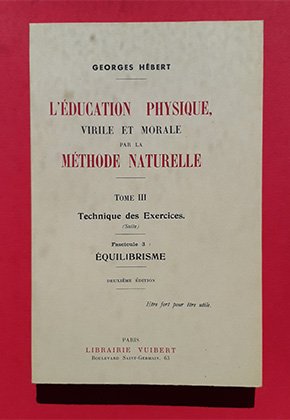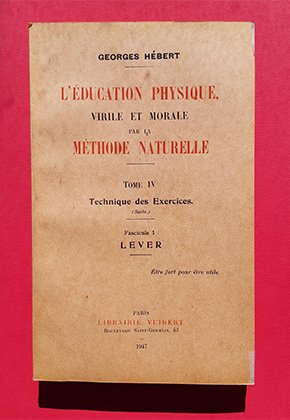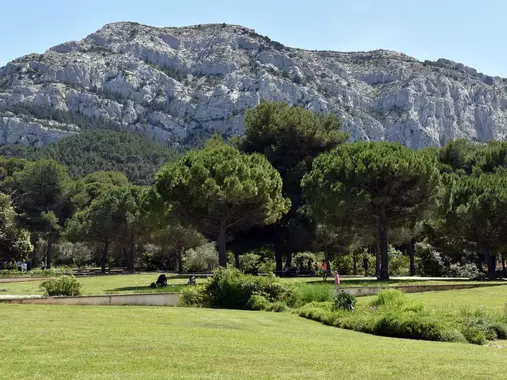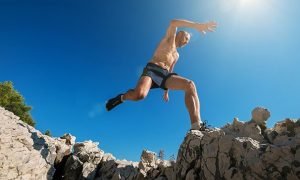⎪Continuity⎪Alternation⎪Gradation⎪Rust⎪Dosage⎪
Flexibility⎪Posture Breathing⎪Liberty⎪Speed Address⎪Weak points⎪
⎪Hardening⎪Joy⎪Acting qualities⎪Altruism⎪Emulation⎪
A training session is a more or less long route or movement during which:
We walk, run, jump, progress in quadruped, climb or climb, walk in balance, lift and carry, throw, fight… and swim (if possible).
We will see on the next page the different places where it can take place, while respecting the 15 pedagogical principles of the Method.
Pedagogy respects rules, some of which derive directly from natural doctrine (working in flexibility, for example, as opposed to working in rigidity) and the others are dictated by experience (granting, for example, freedom of action to each as opposed to the automatic, rhythmic and standardized work of the whole).
The fundamental rules
|
The first 12 principles are a way of doing things while respecting the laws of nature.
The last 3 are specific to man in his way of respecting himself, elevating himself, and respecting others.
1° Continuity of work |

The session must represent sustained and continuous work, and not be interrupted by moments of inaction, stops or immobility for no reason. The goal here is to develop general resistance, and in particular the breath. This point is essential and should not be altered by complicated or technical explanations that would disrupt progress throughout the session.
The vast majority of exercises are therefore performed on the move and there is no absolute rest but only relative rest. And this in order to respect rule n°2, the alternation of efforts, described below.
2° Alternation of contrary efforts |

We manage to apply the rule above, continuity, by following the natural rule of alternations: a moderate effort always succeeding a more intense effort.
This succession of opposing efforts, in terms of intensity, constitutes the two stages of any rhythm of work: effort and counter-effort.
Thanks to a suitable rhythm, everyone can thus make an expenditure of effort in line with their possibilities.
3° Effort intensity gradation |
This is, while respecting the 2 previous rules, to manage the order of succession of the various types of exercises so that the energy expenditure is increasing throughout the session.
On the attached curve, which obviously remains schematic, and must be considered as an indication of what the general conduct of the session should be, we discover the succession of families of exercises as well as the variations in cardiac activity which resulting.
4° Initial derusting and final calming |

The session begins with a “derusting”, activating the heart rate and breathing, warming up the muscles and joints. From a utilitarian point of view, it is important to accustom the body to a sudden start, in order to be ready for any eventuality of action in the event of sudden danger.
It will therefore be a series of short movements and rapid flights, all the more lively as the constitution and development allow it, accompanied by a few jumps, extension of the arms, half turns… in order to make play the main muscles at the same time as the action of the heart and the lungs.
We can notice that in the child, on leaving school for example, the rapid flight is typical and is immediately followed by a short rest then the activity immediately resumes in the form of games or other exercises.
This stretching is not a classic “warm-up” as we often hear, with slow stretches, etc. which does not satisfy the instinct, especially of the youngest. The real start, which at the same time has a powerful psychic effect and which brings them joy, is the sudden and short relaxation, the instantaneous outburst. Like a sparrow release!
At the end of the session, after the final effort which is the most important, calming consists of a very slow walk gradually increased as calm is restored.
5° Dosage and individualization of efforts |
 |
 |
 |
The individualization of this dosage is ensured, even in group sessions, by the freedom of action granted to each.
The general dosage is managed by the very duration of the session (from 30 minutes for the youngest children up to 1 hour or more for adults) and the specific dosage is done by:
– the adjustment of the durations of each exercise as well as the pace of the latter (slow, medium, fast…),
– by the number of repetitions, by adjusting heights, distances, etc.
 |
 |
6° Flexible work |

Flexibility is one of the essential characteristics of performing natural exercises. Without it, no technical improvement is possible.
We must free ourselves from conventional movements, as we can see too often, executed on the spot, abruptly, without utility, and which force certain muscles to contract falsely and without object.
7° Correct posture and ample breathing |

Correct posture is characterized by: chest open, shoulders back and lowered, back straight, neck vertical, head up; The belly is erased and the kidneys slightly dug.
This posture, which allows free and ample breathing, is to be developed and must become natural in daily life. It is also one of the characteristics of the beauty of the attitude.
In addition, shortness of breath must be combated by violent and deep exhalations allowing the stale air to be expelled and oxygen to be brought in during the ensuing inspirations.
8° Complete freedom of action even in collective work |
 |
 |
The freedom of action of each is essential to allow the individualization of efforts. For this, it is necessary to prohibit all supervised training, any form of automatic or mechanical work to be carried out by mimicry, by the authority of a coach, a rhythm, music…
Only this freedom of action allows the best performance or improvement.
9° Culture of speed and skill |
 |
 |
The development of speed, which is a capital element of strength, is only obtained by the attention of the monitor and the constant effort of everyone. Speed is not only about quickly performing an action (running, climbing, etc.), but about reacting abruptly to a signal or an event, for example. Speed is above all mental, nervous before being muscular.
Dexterity is another essential quality that must be constantly cultivated. The precision and correctness of the movements as well as the best performance, which sometimes requires technical improvement, must not disturb the essential rule of “continuity” (Cf: Continuity of work). Specific sessions can then be planned for these technical studies. Dexterity, like speed, is a quality that characterizes the natural gesture particularly well: the natural gesture is precise, dexterous as well as flexible as seen above (Cf: Work in flexibility).
10° Correction of weak points |

Particular attention will be paid to the weak points of each in order to choose the most appropriate exercises to combat them. The objective is to obtain the most complete development possible and not a capacity in a specific and limited area. To train complete beings and not specialists.
This part is the most delicate because it requires the instructor to have a great knowledge of the effects of the exercises, constant attention and
special know-how in order to balance the efforts accordingly
11° Stripping – Weather hardening |
 |
 |
 |

You have to know how to make the most of the extraordinary vitalizing effects of air, sun and water on the skin. The lightest possible outfit (adapted to the weather conditions!) is therefore to be preferred. The undressing will, like the rest, be measured in extent and duration, and there is also freedom so that everyone can adjust it according to their possibilities.
Undressing also helps to develop the body’s endurance to different attacks. Resistance to cold, heat, bad weather, as well as pain, etc. are part of the general resistance.
12° Free manifestation of the joy of movement |
You have to know how to make the most of the extraordinary vitalizing effects of air, sun and water on the skin. The lightest possible outfit (adapted to the weather conditions!) is therefore to be preferred. The undressing will, like the rest, be measured in extent and duration, and there is also freedom so that everyone can adjust it according to their possibilities.
 |
 |
Natural work naturally leads to joy and enthusiasm as a result of the well-being and euphoria felt.
This joy of movement must be able to manifest itself freely, especially in children, by shouting or singing.
Small games or dances can sometimes conclude a session.
A session performed without enthusiasm proves that an error has been made in the way of composing or in the dosage of the session.
13° Cultivation of acting qualities |

The so-called action qualities are those that will allow purely “physical” qualities to be able to express themselves in certain circumstances presenting a risk, commitment or danger. From a physical point of view, the work is the same as crossing a beam 20 cm from the ground and 3 meters high. And yet it is obvious that other qualities are also called upon in the second case…
The development of these qualities – courage, will, energy, composure, firmness, etc. – is obtained by:
- The execution of exercises presenting difficulties and a certain risk or requiring to overcome one’s fears (of falling, jumping, diving, etc.)
- The desire to succeed in a particular exercise or performance
- The example value of the trainer, etc.
14° Culture of altruism |

The acquired force must be guided, oriented towards a higher ideal.
Everyone must think of their own strength as being able to be put to the service, and not to the detriment, of the other. Also, a spirit of permanent mutual aid will be maintained during climbing or balance exercises, for example, cooperation during collective carrying or even respect for one’s opponent during defense exercises.
Respect for the weakest, encouragement, advice, will be a vector for developing an altruistic spirit.
15° Culture of emulation and self-emulation |
 |
 |
 |
To obtain the best results, it is necessary to make an act of will. Awakening the taste for effort is greatly facilitated by working together because it naturally creates emulation. The instructor will endeavor to remain in the field of healthy emulation and not that of competition.
The control of results, with rated performances, is also a powerful driver of self-emulation, with everyone taking an interest in their abilities and seeking to improve them by being able to measure their progress over time. (See the “Results check” page)


















